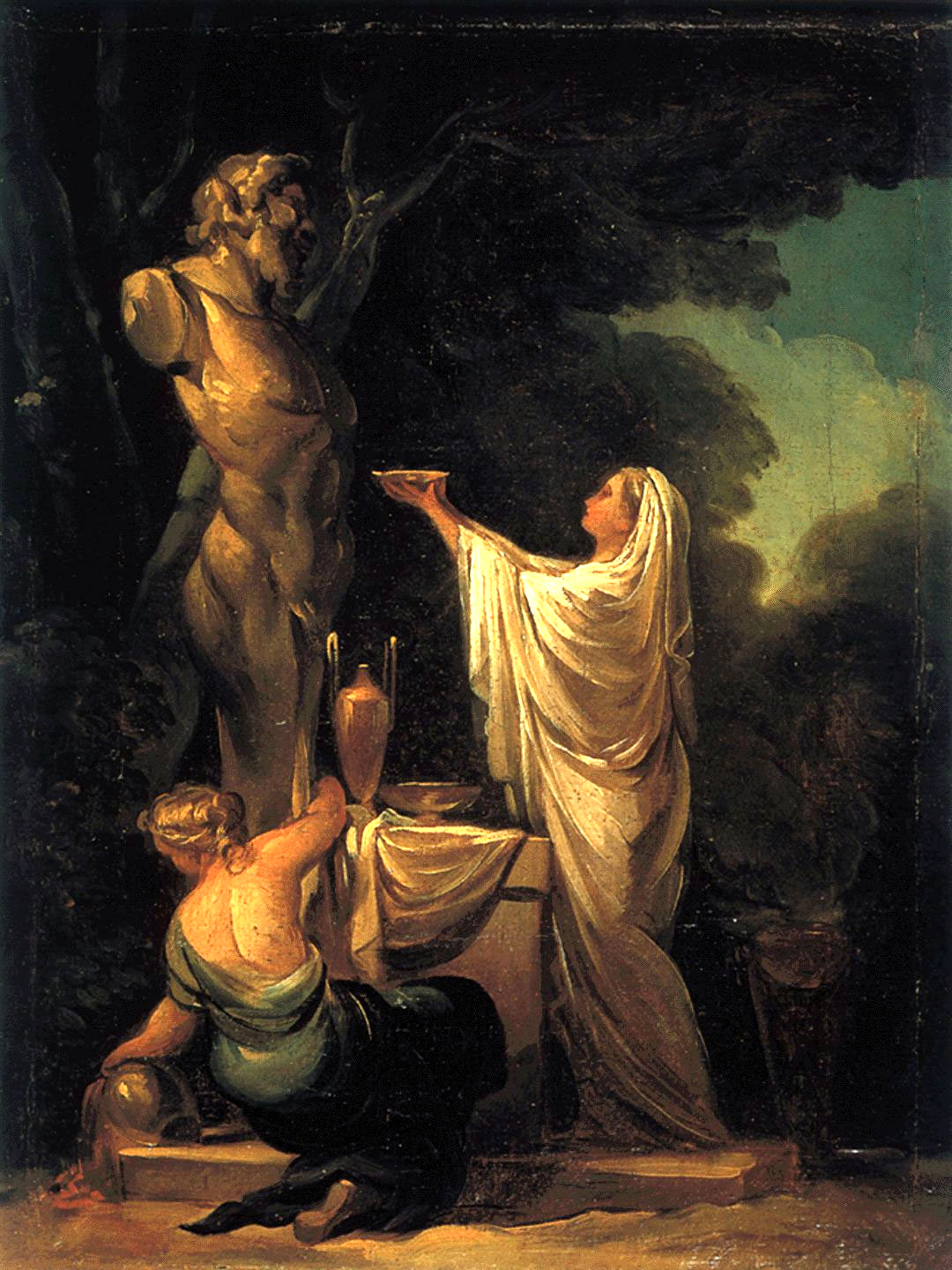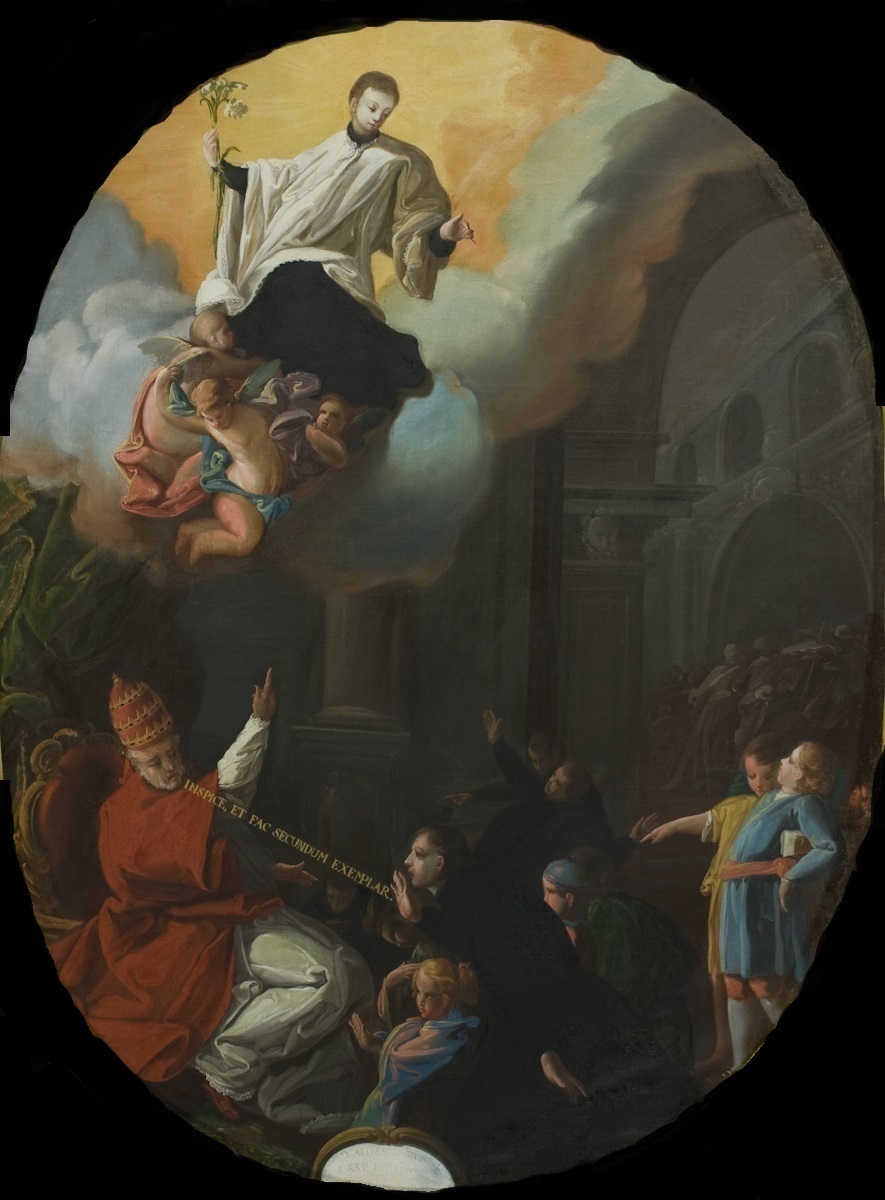|
La Tirana (Goya, 1792)
''La Tirana'' is an oil on canvas portrait by Francisco de Goya. Previously dated to 1799 due to a later pencil inscription, it is now dated to 1790–1792 by the Goya scholars José Gudiol and José Manuel Pita Andrade. Real Academia de Bellas Artes de San Fernando, ed. (2016). ''Goya en el Museo de la Academia.'' Madrid. p. 16-17. . It is now in the Real Academia de Bellas Artes de San Fernando in Madrid. It is the first of two portraits he produced of the actress María del Rosario Fernández, known as 'La Tirana' after her actor husband Francisco Castellanos, who was nicknamed ''el Tirano''. The other is in a private collection. See also *List of works by Francisco Goya The following is an incomplete list of works by the Spanish painter and printmaker Francisco Goya. Paintings (1763–1774) Paintings (1775–1792) ''see also: List of Francisco Goya's tapestry cartoons'' Paintings (1793–1807) Paintings (1 ... References Bibliography (in Spanish) * Glendinnin ... [...More Info...] [...Related Items...] OR: [Wikipedia] [Google] [Baidu] |
Francisco Goya
Francisco José de Goya y Lucientes (; ; 30 March 174616 April 1828) was a Spanish romantic painter and printmaker. He is considered the most important Spanish artist of the late 18th and early 19th centuries. His paintings, drawings, and engravings reflected contemporary historical upheavals and influenced important 19th- and 20th-century painters. Goya is often referred to as the last of the Old Masters and the first of the moderns. Goya was born to a middle-class family in 1746, in Fuendetodos in Aragon. He studied painting from age 14 under José Luzán y Martinez and moved to Madrid to study with Anton Raphael Mengs. He married Josefa Bayeu in 1773. Their life was characterised by a series of pregnancies and miscarriages, and only one child, a son, survived into adulthood. Goya became a court painter to the Spanish Crown in 1786 and this early portion of his career is marked by portraits of the Spanish aristocracy and royalty, and Rococo-style tapestry cartoons desig ... [...More Info...] [...Related Items...] OR: [Wikipedia] [Google] [Baidu] |
Real Academia De Bellas Artes De San Fernando
The Real Academia de Bellas Artes de San Fernando (RABASF; ), located on the Calle de Alcalá in the heart of Madrid, currently functions as a museum and gallery. A public law corporation, it is integrated together with other Spanish royal academies in the . History The academy was established by royal decree in 1752. About twenty years later, the enlightened monarch Charles III purchased a palace in Madrid as the academy's new home. The building had been designed by José Benito de Churriguera for the Goyeneche family. The king commissioned Diego de Villanueva to convert the building for academic use, employing a neoclassical style in place of Churriguera's baroque design. The academy is also the headquarters of the Madrid Academy of Art. Notable alumni The first graduate of the academy was Bárbara María Hueva. Francisco Goya was once one of the academy's directors. Its alumni include Felip Pedrell, Pablo Picasso, Kiko Argüello, Remedios Varo, Salvador Dalí, Ant ... [...More Info...] [...Related Items...] OR: [Wikipedia] [Google] [Baidu] |
Madrid
Madrid ( , ) is the capital and most populous city of Spain. The city has almost 3.4 million inhabitants and a metropolitan area population of approximately 6.7 million. It is the second-largest city in the European Union (EU), and its monocentric metropolitan area is the third-largest in the EU.United Nations Department of Economic and Social AffairWorld Urbanization Prospects (2007 revision), (United Nations, 2008), Table A.12. Data for 2007. The municipality covers geographical area. Madrid lies on the River Manzanares in the central part of the Iberian Peninsula. Capital city of both Spain (almost without interruption since 1561) and the surrounding autonomous community of Madrid (since 1983), it is also the political, economic and cultural centre of the country. The city is situated on an elevated plain about from the closest seaside location. The climate of Madrid features hot summers and cool winters. The Madrid urban agglomeration has the second-large ... [...More Info...] [...Related Items...] OR: [Wikipedia] [Google] [Baidu] |
Francisco De Goya
Francisco José de Goya y Lucientes (; ; 30 March 174616 April 1828) was a Spanish romantic painter and printmaker. He is considered the most important Spanish artist of the late 18th and early 19th centuries. His paintings, drawings, and engravings reflected contemporary historical upheavals and influenced important 19th- and 20th-century painters. Goya is often referred to as the last of the Old Masters and the first of the moderns. Goya was born to a middle-class family in 1746, in Fuendetodos in Aragon. He studied painting from age 14 under José Luzán y Martinez and moved to Madrid to study with Anton Raphael Mengs. He married Josefa Bayeu in 1773. Their life was characterised by a series of pregnancies and miscarriages, and only one child, a son, survived into adulthood. Goya became a court painter to the Spanish Crown in 1786 and this early portion of his career is marked by portraits of the Spanish aristocracy and royalty, and Rococo-style tapestry cartoons desig ... [...More Info...] [...Related Items...] OR: [Wikipedia] [Google] [Baidu] |
José Gudiol Ricart
Josep Gudiol i Ricart, also known as José Gudiol in citation (1904–1985), was a Catalan art historian, specializing in Catalan Romanesque painting, Gothic painting and other types of Spanish art. Biography Josep Maria Gudiol i Ricart was born in 1904 in Vic Vic (; es, Vic or Pancracio Celdrán (2004). Diccionario de topónimos españoles y sus gentilicios (5ª edición). Madrid: Espasa Calpe. p. 843. ISBN 978-84-670-3054-9. «Vic o Vich (viquense, vigitano, vigatán, ausense, ausetano, ausonense): ..., Catalonia, Spain. Gudiol Ricart published a series of monumental books surveying Spanish art history, the ''Ars Hispaniae'' series. The two most important works in the series were, ''Las Pinturas Murales Románicas de Cataluña'' (Gudiol and Pijoán, 1948) and ''Arquitectura y Escultura Románicas'' (Gudiol and Gaya Nuño, 1948). He served as director of the Amatller Institute of Hispanic Art (Institut Amatller D'art Hispànic) in Barcelona, Spain. Gudiol's daughter ... [...More Info...] [...Related Items...] OR: [Wikipedia] [Google] [Baidu] |
María Del Rosario Fernández
María del Rosario Fernández (1755–1803), was a Spanish stage actress An actor or actress is a person who portrays a character in a performance. The actor performs "in the flesh" in the traditional medium of the theatre or in modern media such as film, radio, and television. The analogous Greek term is (), lite ....Cotarelo y Mori, Emilio (2007). María del Rosario Fernández, la Tirana. Primera dama de los teatros de la Corte. Madrid, Asociación de Directores de Escena de España. pp. 173 - 328. . She is regarded as one of the most notable stage actors of Spain during her period, and was known as La Tirana. Notes 1755 births 1803 deaths 18th-century Spanish actresses Spanish stage actresses {{Stage-actor-stub ... [...More Info...] [...Related Items...] OR: [Wikipedia] [Google] [Baidu] |
La Tirana (Goya, 1794)
''La Tirana'' is a 1794 oil on canvas portrait by Francisco de Goya. It was last recorded in the March collection in Palma de Mallorca in 2001. It is the second of two portraits he produced of the actress María del Rosario Fernández, known as 'La Tirana' after her actor husband Francisco Castellanos, who was nicknamed ''el Tirano''. The other is in the Real Academia de Bellas Artes de San Fernando. See also *List of works by Francisco Goya The following is an incomplete list of works by the Spanish painter and printmaker Francisco Goya. Paintings (1763–1774) Paintings (1775–1792) ''see also: List of Francisco Goya's tapestry cartoons'' Paintings (1793–1807) Paintings (1 ... Bibliography (in Spanish) * Glendinning, Nigel (1992). Central Hispano, ed. Goya. ''La década de los Caprichos. pp. 148-149. . * Gómez García, Manuel (1998). ''Diccionario Akal de Teatro.'' Ediciones Akal. . * Huerta, Javier; Peral, Emilio; Urzaiz, Héctor (2005). Espasa-Calpe, ed. ''Teatr ... [...More Info...] [...Related Items...] OR: [Wikipedia] [Google] [Baidu] |
List Of Works By Francisco Goya
The following is an incomplete list of works by the Spanish painter and printmaker Francisco Goya. Paintings (1763–1774) Paintings (1775–1792) ''see also: List of Francisco Goya's tapestry cartoons'' Paintings (1793–1807) Paintings (1808–1818) Paintings (1819–1828) Prints (Los Caprichos) As well as paintings Goya was also one of the greatest ever printmaking, printmakers. He produced several sets of prints using the relatively new technique of aquatint. Towards the end of his life Goya also began to experiment with lithography. The dimensions given refer to the size of the printed image rather than the paper that the image is printed on. Prints (Disasters of War) Prints (La Tauromaquia) Prints (Los disparates) Prints (Bulls of Bordeaux) Prints (Other prints) See also * List of Francisco Goya's tapestry cartoons * Black paintings Notes References External links Catalogue at University of ZaragossaGoya at the Prado {{Lists of pain ... [...More Info...] [...Related Items...] OR: [Wikipedia] [Google] [Baidu] |
1792 Paintings
Year 179 ( CLXXIX) was a common year starting on Thursday (link will display the full calendar) of the Julian calendar. At the time, it was known as the Year of the Consulship of Aurelius and Veru (or, less frequently, year 932 '' Ab urbe condita''). The denomination 179 for this year has been used since the early medieval period, when the Anno Domini calendar era became the prevalent method in Europe for naming years. Events By place Roman empire * The Roman fort Castra Regina ("fortress by the Regen river") is built at Regensburg, on the right bank of the Danube in Germany. * Roman legionaries of Legio II ''Adiutrix'' engrave on the rock of the Trenčín Castle (Slovakia) the name of the town ''Laugaritio'', marking the northernmost point of Roman presence in that part of Europe. * Marcus Aurelius drives the Marcomanni over the Danube and reinforces the border. To repopulate and rebuild a devastated Pannonia, Rome allows the first German colonists to enter territory ... [...More Info...] [...Related Items...] OR: [Wikipedia] [Google] [Baidu] |
Portraits By Francisco Goya
A portrait is a painting, photograph, sculpture, or other artistic representation of a person, in which the face and its expressions are predominant. The intent is to display the likeness, personality, and even the mood of the person. For this reason, in photography a portrait is generally not a snapshot, but a composed image of a person in a still position. A portrait often shows a person looking directly at the painter or photographer, in order to most successfully engage the subject with the viewer. History Prehistorical portraiture Plastered human skulls were reconstructed human skulls that were made in the ancient Levant between 9000 and 6000 BC in the Pre-Pottery Neolithic B period. They represent some of the oldest forms of art in the Middle East and demonstrate that the prehistoric population took great care in burying their ancestors below their homes. The skulls denote some of the earliest sculptural examples of portraiture in the history of art. Historical portraitur ... [...More Info...] [...Related Items...] OR: [Wikipedia] [Google] [Baidu] |





